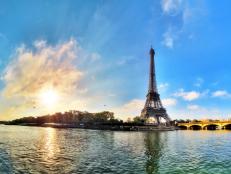Croatia Do's and Don'ts


Thinkstock
With approximately 1,200 islands, azure waters and picturesque villages rich in history, Croatia is drawing more and more travelers to its shores. In fact, Croatia closed the 2012 tourism year as the Mediterranean’s fastest growing destination, luring travelers with its pristine national parks, adventure sports and UNESCO World Heritage sites such as the medieval Old Town of Dubrovnik. There’s more big news ahead as Croatia enters the European Union in summer 2013 as the 28th member state, and in especially good news for American travelers, the country will retain its use of the kuna, the domestic currency, which is kinder to the American dollar than the euro. While travel in Croatia is pretty much a breeze, here are a few do's and don’ts to help you navigate the country’s diverse offerings more smoothly.

Don’t Be Afraid of the Bus
Unlike other European countries where hitting the rails is a no-brainer, Croatian train travel is not always the easiest way to get around. Although Croatian Railways, the national train company, does connect many cities, there is no service in the south, for example from tourist-heavy Split down to Dubrovnik, arguably Croatia’s most popular travel destination. There is only limited train service in the Istrian peninsula, a travel hotspot in the north likened to Tuscany for its rolling hills of vineyards and olive trees. The public transportation solution? Hop on the bus! The bus company Libertas Dubrovnik has as many as 13 buses traveling between Split and Dubrovnik every day, and the trip generally takes about 4 hours, only an hour more than if you drove in a car. For travel to Istria, try the bus company Autotrans; they have a line that will take you from Croatia’s capital city of Zagreb to the old Roman city of Pula, for example, in about 5 hours -- 2 hours longer than driving by car.
Do Drive With Care (And Don’t Talk on Your Cell)
While Croatian buses may run well, if you want to zip around more freely, rent a car. All of the major rental companies, from Avis to Hertz, are represented in Croatia, and can be picked up at the Zagreb airport. It’s usually cheaper to book online, and best to reserve well in advance if you are making a summer trip -- cars have been scarce in the popular travel months of July and August. Almost all Croatians drive a manual transmission, so if you prefer automatic, let the rental car company know when you make the reservation. Also, don’t drive and talk on your cell phone -- it is illegal in Croatia, and strictly enforced. You can drive with your own license and a passport for up to 6 months, after which time you would need a Croatian driver’s license. And while road signs are easily readable in Croatia, the driving sometimes isn’t. Local drivers tend to pass aggressively, and although the views on the coastal route from Split to Dubrvnik are breathtaking, keep your eyes glued to the road -- the guardrails on some of the hairpin curves don’t look very reassuring. But you do drive on the right side of the road in Croatia, so you can relax about that.
Do Take Ferries and Charter a Boat
If you are visualizing many paradisiacal swims in clear blue waters, then the Croatian islands are calling your name. Most of the residents of Croatian islands have their own small boats to travel between islands and the coast -- it’s the easiest way to get around. Public ferries in Croatia are another common way to island hop. The largest ferry company with the most connections in Croatia is Jadrolinija; there are also many smaller regional companies that you can ask the Croatian National Tourist Board about. Keep in mind that island hopping by commercial ferries can be difficult to plan and often inefficient. For example, the north-south ferries (Rijeka to Dubrovnik), run only 2 times a week. If you need more flexibility, look into chartering a boat. There are many local companies, like Happy Charter on the fashionable island of Havr, or Argola Charter in the appealing seaside town of Trogir, from whom you can rent speedboats, yachts or catamarans.

Don’t Walk the Walls With the Masses
If you plan to travel to Croatia during the peak months of July and August, you might have to buck some trends to avoid the crowds. For example, the No. 1 tourist activity in Dubrovnik is to walk atop the famous City Walls that run for over a mile around the Old Town. The remaining stonewalls, built in the Middle Ages, tower up to 82 feet in some places and are a great point of pride for Croatians -- no marauding outsiders have ever successfully invaded them. But take a cue from the locals -- stay away from the walls during the middle of the day in the summer when it can be very hot and crowded.
Do Watch Your Step
If you tend to venture off the beaten path, beware of unexploded minefields in inland areas like Eastern Slavonia, Brodsko-Posavska County, Karlovac County, areas around Zadar County and in more remote areas of the Plitvice Lakes National Park. Up to 2 million mines were laid during the war of the early ’90s, and Croatia is not expected to be mine-free until 2019. The mines are not in tourist spots and chances that foreigners would visit many of these places are slim. Nonetheless, hundreds of people have been killed by mines in Croatia since the end of the war; if you do happen to travel in these areas, stay on cultivated paths and look out for warning signs with the international symbol for mines -- a skull and crossbones inside a red, upside-down triangle.
Do Remember the Patron Saint
According to the last major census, almost 90% of Croatians are Catholic. So keep in mind that each village and town has a patron saint whose feast day will be celebrated with processions and ceremonies and probably a day off from work. Croatians are especially devoted to the Virgin Mary, whom they call "Gospa." Keep your eye out for little shrines built throughout the countryside to honor her.
Don’t Call It Yugoslavia
Croatia has long grappled with invading forces and external governments: Hungarian, Habsburg, Ottoman, Venetian, Serbian and Yugoslav. The country only just gained independence in 1991, and immediately thereafter was thrust into the devastating Bosnian War of the early ’90s. Now, Croatians are truly free, with a well-deserved sense of national pride. Therefore, steer clear of calling them Yugoslav.
Do Call It Croatian
Linguists say the Croatian language is almost identical to Serbian, except that Croatian is written in the Roman alphabet, while Serbian is written in Cyrillic. Nonetheless, always call their language “Croatian,” and not “Serbo-Croatian,” as it has sometimes erroneously been called in the past; comparisons to anything Serbian can still be a touchy subject for some.

Do Watch Where You Go Topless!
If you’re tempted to go European and drop the bikini top, feel free. Plenty of travelers sunbathe topless on beaches in northern and central Croatia -- and go totally nude in specified areas-- but you may need to be more discreet in the south, where values tend to be more conservative. And if you happen to find yourself on the island of Krk, know that this is the birthplace of numerous Croatian bishops and a very religious community to boot -- so, keep your clothes on.
Next Up
7 Hours in Barcelona
What to Know About Moving to France
What to Miss in London
9 Hours in Paris
Tuscany Should Be Your Next Adventure Travel Destination
Where to Stay in Amsterdam for the Best Canal Views
The Ultimate Dublin Bucket List For U2 Fans
Where to Travel in April
Plan ahead and see our list of best places to visit in April.











































